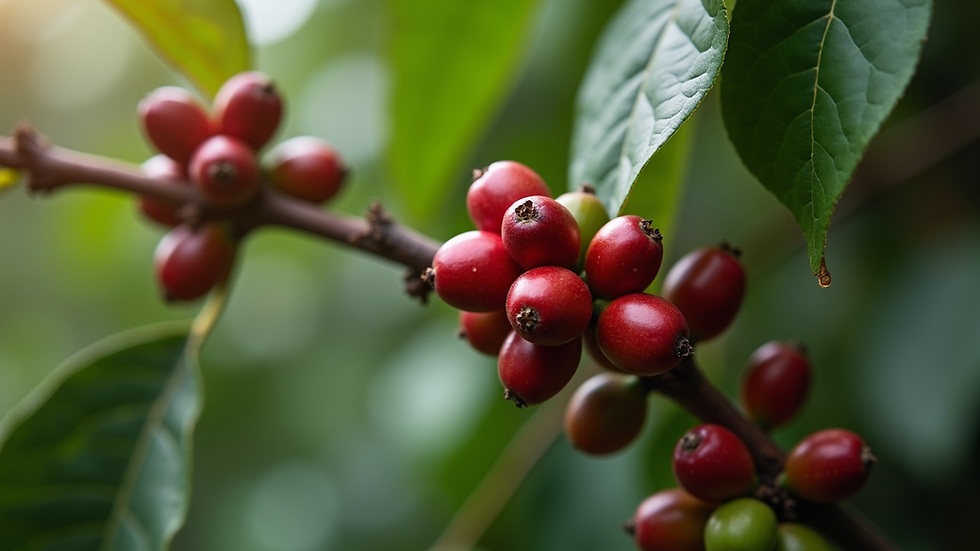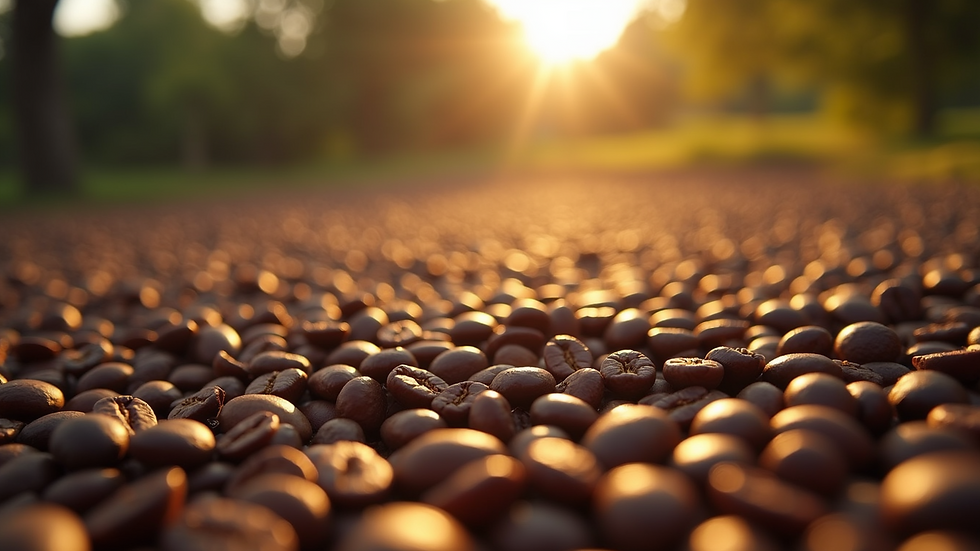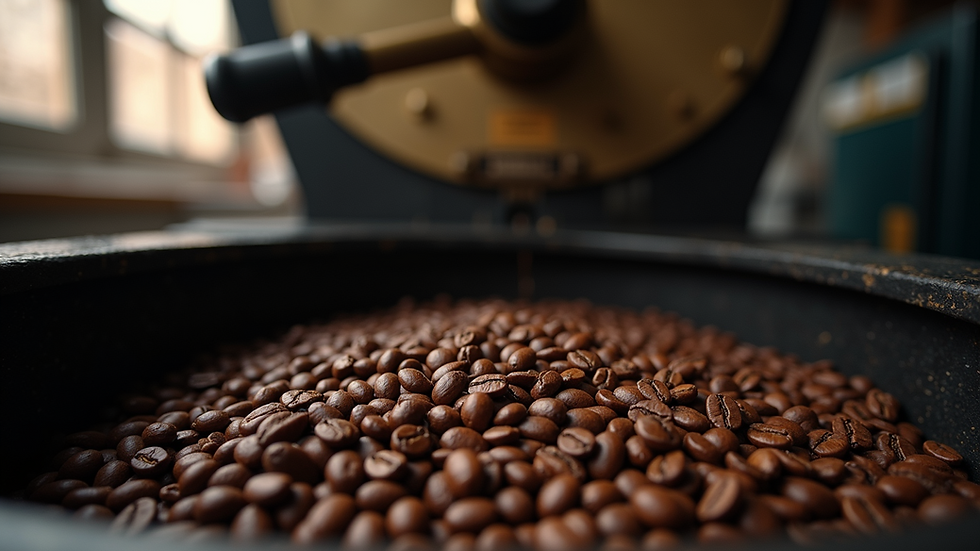From Cherry to Cup: The Exciting Journey of Coffee from Harvesting to Roasting
- Tanmay
- Aug 7
- 4 min read
Coffee is more than just a drink; it's a morning ritual and an afternoon companion. But have you ever considered the amazing journey coffee takes from the cherry on the tree to the cup in your hand? In this article, we will explore the entire process of coffee production, covering everything from harvesting to roasting. So grab your favorite mug, and let’s dive into this exciting journey through the world of coffee!
The Coffee Cherry: The Starting Point
Coffee begins with the coffee cherry, a bright red fruit that grows on coffee trees primarily found in tropical regions like Colombia, Brazil, and Ethiopia. Inside each cherry is the coffee bean, which is, in fact, the seed.
Coffee cherries ripen in about 6 to 8 months, and they must be harvested at just the right moment for peak flavor. This is typically achieved through hand-picking, which allows farmers to select only the best cherries. The quality of these cherries is critical; for instance, specialty coffees are often made from cherry selections with a minimum score of 80 out of 100 on the Specialty Coffee Association scale.

Once harvested, the cherries undergo processing almost immediately to prevent spoilage. This next step is crucial for flavor development and can be accomplished through dry or wet processing methods.
Processing the Cherries: Dry vs. Wet
Dry Processing
The dry method, also known as natural processing, involves spreading coffee cherries out under the sun to dry. The outer fruit ferments and dries onto the seed, often resulting in a heavier body and fruity flavors in the coffee. For example, natural Ethiopian coffees are renowned for their berry-like qualities. However, this method is dependent on good weather, requiring about 2 to 4 weeks of consistent sunlight.
Wet Processing
In contrast, the wet method involves pulping the cherries to remove the outer skin and then fermenting the beans in water for 12 to 48 hours. This technique often yields a cleaner taste and highlights the original characteristics of the coffee bean. For instance, coffees from Colombia are frequently wet-processed and exhibit bright acidity and floral notes, making them highly sought after. Although labor-intensive, this method often results in higher quality coffee.
After processing, the coffee beans are washed, dried, and meticulously sorted by quality. This level of detail is vital; studies show that well-sorted beans can enhance flavor consistency by up to 20%.

Milling: Removing the Hulling
Milling is the next step, where beans are hulled to remove any remaining layers of parchment and husk. This process prepares the beans for export. Following hulling, the beans are graded and sorted based on size and weight, ensuring consistency. Only 10% of the harvested coffee beans meet the highest quality standards in this phase.
Once milled, the beans are packed and shipped to coffee roasters around the world. So, what happens next? The roasting process transforms these green beans into the aromatic coffee we love.
Roasting: The Art of Flavor Development
Roasting is where the magic happens. It’s during this stage that beans acquire their rich colors and distinct flavors. Roasters may use different methods, such as drum roasters or air roasters, but the application of heat is essential.
As the beans roast, they progress through several key stages:
First Crack: This occurs when the beans expand and release a popping sound, indicating a light roast.
Second Crack: Continuing the roast leads to a second crack, which means the beans are entering medium to dark roast territory, developing richer flavors and oils.
Roasting times can vary widely. For instance, a light roast typically takes 8 to 12 minutes, while a dark roast may take up to 18 minutes. The choice of roast impacts flavor, with lighter roasts retaining more of the beans' original flavors and darker roasts delivering bolder, smoky notes.

Grinding: Preparing for Brewing
Once roasted, the beans must be ground to a specific coarseness for brewing. The grind size profoundly affects flavor, influencing extraction time. For instance, a finer grind is best for espresso and requires a shorter extraction time, while coarser grinds are suited for methods like French press, which need a longer brew time.
When it comes to brewing, options include espresso, filter coffee, pour-overs, and French press. Each method provides a unique taste experience, making coffee exploration an exciting journey for your palate!
Brewing: The Final Touch
Brewing coffee is where everything comes together. With freshly ground coffee, water, and your chosen method, you can extract the vibrant flavors developed throughout the journey.
Key factors in brewing are water temperature, brewing time, and the coffee-to-water ratio. For instance, a typical range for brewing temperature is between 195°F to 205°F. A careful balance can elevate your cup from good to extraordinary, whether you enjoy a rich espresso or a light pour-over.
The Journey of Coffee from Cherry to Cup
The path from coffee cherry to your cup is intricate and full of passion. It reflects the hard work of farmers and roasters dedicated to delivering quality coffee. Understanding this journey deepens your appreciation for each sip and highlights the efforts involved in producing this beloved beverage.
As a coffee lover, exploring different methods and flavors can deepen your connection with coffee. So, the next time you take a sip, remember the journey it took—from sun-drenched plantations to your warm mug.
The world of coffee is broad, thrilling, and always evolving. Let your exploration continue, and enjoy brewing a cup that satisfies your taste buds!



Comments